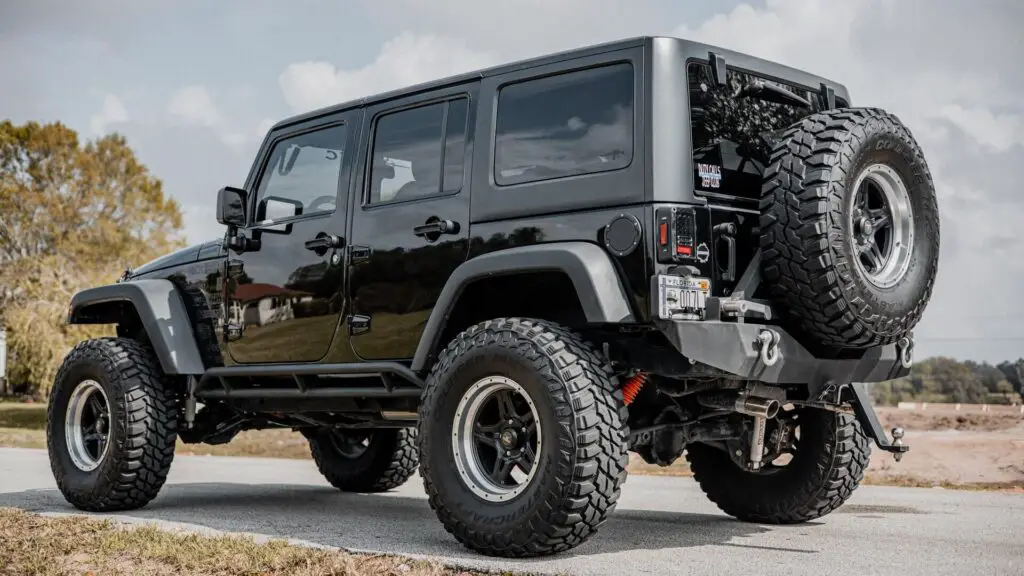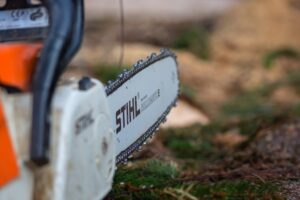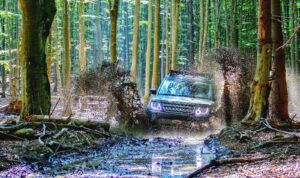If you want to enjoy off-road driving you need to ensure that your vehicle is up to standard to handle the difficult task of navigating the slippery and hard terrain. If you have heard some off-road driving conversations, chances are you have heard about limited-slip differentials.
We know you are probably asking if limited slip-differentials are good for off-road driving.
The answer is yes. The limited slip differential is perfect for off-road driving and this is due to the power transfer mechanism that limited-slip differentials use when they are on slippery terrain.
If you are planning to go out there and enjoy some off-road driving, then there is every reason to read this article on limited-slip differentials.
Contents
The Limited Slip Differential (LSD)
The Limited Slip differential gained prominence in the 1960s during the US muscle car era.
The main reason for the rise in popularity was that it gave an edge to the high performance vehicles that were popular during that era.
This is one of the best mechanisms when it comes to preventing accidents and enhancing your off-road experience. Over the years there has been significant development when it comes to limited-slip differentials especially with the aim to improve off-road driving.
It is important to first look at the working principle of the Limited Slip Differential before we delve into more detail about why it is a dream mechanism for off-road drivers.
The Working Principle Of The Limited Slip Differential
The mechanism of the limited-slip differential is quite simple. The limited-slip differential combines the working principle of the open differential and that of the locked differential to give the best driving experience especially when you are driving on rough terrain.
Limited-slip differential is located on your drive axle. The location is also an essential component as it allows the LSD to efficiently execute its duty without fail. The LSD is quite large and if you look at your drive axle, you will not miss it.
The main function of the Limited Slip Differential is to provide and distribute the power to the four wheels of your vehicle.
Remember the engine gives out the maximum torque to the drivetrain and once the power reaches the drive train the power has to be distributed either evenly or proportionally depending on the differential system as well as the driving conditions.
This is where the Limited Slip Differential comes in. Power distribution is a major issue when it comes to vehicles and for that reason, it becomes vitally important to understand how the mechanism works.
LSD mechanism on open roads
When you are driving on an open road, the Limited Slip Differential opens up and power is distributed equally to all the wheels.
Although power is distributed evenly the wheels will rotate at different speeds this is very important as it also allows vehicles to make turns.
If you are familiar with differentials then you know that this is the general working principle of the locking differential. The main driving principle of the LSD in an open road is equal power but different spin rates.
On an open road, there is no need to divide the power unevenly. This means that you can attain high speeds on open roads and you will not have to worry about taking a turn.
LSD mechanism in Off-roads
When you are on a slippery road and only one side of your vehicle is slipping, the Limited Slip Differential will make sure that all the power is transferred to the side that is not slipping.
This mechanism is genius in that it allows the traction to remain on the wheels that are not slipping. This means that you will not lose traction entirely as you drive.
There is no need to have power at the wheels that are slipping as regardless of the amount of power they have they will not be able to move.
If power is still sent to the slippery wheels you will end up in a situation where the wheels are just spinning without moving. This does nothing but waste power and dig you into a deeper hole, which may end up being virtually impossible to get out of on your own.
If you have a limited-slip differential and you get stuck in a slippery situation you have a better chance of getting out of that mess compared to those with other differential mechanisms.
The same principle also works when your vehicle is driving on rough terrain.
Chances are when the road is rough and the terrain is rocky one wheel will be stuck/hang in the air. If you have an open differential what happens with the wheel is that power will continue being shared equally to the wheels and the suspended wheel will do nothing but take the power and use it to spin in mid-air without adding anything to the movement of the vehicle.
The limited-slip differential in a similar situation will ensure that power is distributed amongst the wheels that are in the ground.
The Limited Slip Differential is a combination of both the open and locking differential, This means that in instances where an open differential works well, that is how the limited-slip differential works.
For instance, in an open road where there is no need to lock traction the limited-slip differential will act as an open differential, this will allow for efficient driving on open roads.
If you get on rough terrain, the limited-slip differential will allow the wheels to have more traction on the ground and easily maneuver out of slippery or uneven situations.
Why Is the Limited Slip Differential is good for off road
One thing that we have highlighted is that the Limited Slip Differential is quite adaptive for all forms of driving that is off-road driving as well as on-road driving.
One thing that we can authoritatively say is that you will enjoy the limited-slip differential system more if you are undertaking off-road driving.
The limited-slip differential is great for off-road driving and here is why
The limited-slip differential in off-road situations where the terrain is uneven and it gets to a point where one wheel is not on the ground, the limited-slip differential will ensure that there is more torque on the wheels that are on the ground.
This is very important as more torque on the wheels on the ground means that there is going to be more traction on the wheels and in turn, more drive.
This means that it becomes easier to undertake uneven terrain, which is very common if you are off-road driving. So you will not struggle to negotiate uneven terrain and that is already half the difficult part of off-road driving.
Another aspect of off-road driving that will give you problems is slippery roads.
The last thing you would want is slipping off a steep hill, this may lead to accidents. The most common thing in both slippery terrains is that one side will be more slippery than the other is.
The limited-slip differential will ensure that power will be distributed to the side of the vehicle that is less slippery. The reason for this is that that side will have more traction compared to the slipping side and having more traction on the non-slippery side will ensure that the car drives out of the slippery area easily.
One of the hardest parts about off-road driving is slippery roads with limited-slip differentials though, that is one thing that you won’t have to worry about.
We know that off-road driving is not only about slippery roads and uneven terrain, there is also an open road that is quite the most dominant part when it comes to off-road driving.
This means that there will be no need to keep traction locked in open roads.
As a result, when you are driving on an open road, the Limited slip differential will act like an open differential and will allow wheels to spin independently to allow for turns.
This means that if you have a limited-slip differential, you have all aspects of the off-road driving experience figured out.
The limited-slip differential is in every sense of the word perfect for off-road driving.
The Best Limited Slip Differentials for off-road
There are two main types of limited-slip differentials.
The viscous limited-slip differential and the mechanical clutch limited-slip differential.
Both work using the same working principle the only difference is that the viscous limited-slip differential uses a thick viscous liquid instead of clutches which is the case with the mechanical clutch LSD.
For off-road driving, we recommend the mechanical clutch LSD. The main reasoning behind this is the fact that the mechanical clutch LSD has three different subtypes each with a different mechanism of dealing with pressure when it is exerted on the differential.
That is the one-way LSD, the two-way LSD, and the one and a halfway LSD.
One thing we know about off-road driving is that for every operation there is a need to have several options for any mechanism to ensure that you will not end up stuck or worse in an accident.
The mechanical clutch LSD has a similar gear setup to that of the locking differential with the only difference being a pair of pressure rings exert pressure to the two clutch plates positioned near the gears.
The working principle of the mechanical clutch Limited Slip Differentials is not very different from that of the viscous LSD.
If you were to choose the best LSD mechanism for off-road driving then we would recommend that you go with the mechanical clutch Limited Slip Differential.
Which Vehicles have Limited Slip Differentials

Most automakers tend to shun away from the limited-slip differential. This may mainly be due to the complexity of the system.
Manufacturers like Jeep who aim to provide a premium driving experience for their customers are quite keen when it comes to the limited-slip differential system.
The Jeep Wrangler series is one of the most popular series of SUVs that comes with the limited-slip differential. Not all Jeep Wranglers are equipped with the Limited Slip Differential system.
As a result it is a wise idea to first confirm with your car dealer before making a purchase.
Performance-based vehicles that are part of the BMW X series also have a preference for the limited-slip differential. The list of performance vehicles that come equipped with the slip differential system includes the Ford Mustang and the Subaru BRZ.
Off-road, driving requires the best performance from your vehicle and as a result, there is a need to ensure that you have the best components installed on your vehicle before trying it out.
If your car has a limited-slip differential, then you are already halfway to off-road compatibility. If you want to enjoy your off-road experience there is a need for you to be extra careful especially when it comes to speed.
Conquer the off-road experience!




